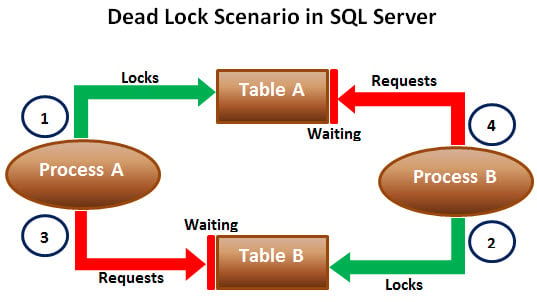

- Sql server deadlock 256 how to#
- Sql server deadlock 256 update#
- Sql server deadlock 256 manual#
- Sql server deadlock 256 code#
We have a similar issue with table variables in an update statement. Hopefully it helps someone who encounter the same issue.

However, the general mechanics of the issue seems to be as hinted above. Every attempt I made resulted in the “convenient” “ String or binary data would be truncated …” error. So, I am not able to pass any exact replication steps for this behavior. I tried to simulate this behavior on an artificial example outside of the. When we updated the table type definition to accommodate longer strings, all commands in the transaction were processed smoothly regardless of the compatibility level set. The truncation issue mentioned above was about that the application tried to insert a longer nvarchar string than the table type column definition allowed. The only change of the compatibility level changed the error message returned. We also tried to keep the compatibility level on 150 and just turn off the deferred compilation by ALTER DATABASE SCOPED CONFIGURATION SET DEFERRED_COMPILATION_TV = OFF When we switched back to 150 we started receiving self-deadlock error an a previous command again. Instead of deadlock we started receiving more convenient error message of “ String or binary data would be truncated in table…”, but from a completely different command much closer to the end of the transaction. We tried to switch the compatibility level down from 150 to 140 and the situation has changed. Using (SqlCommand command = connection.CreateCommand())Īnd the deadlock mentioned in the question occurred in one of these commands somewhere in the middle of the transaction…
Sql server deadlock 256 code#
Several commands like this are processed one-by-one within a transaction by the application (.Net) …Īn Example of a slightly simplified app code used in the application : SqlConnection connection The application uses these variables to pass this data as a parameter of the sp_executesql. Some of the types are very simple with just a one column (as the one shown in the question), some of them contains 10+ columns of various types. It uses several different User-Defined Table Types as table variables. There is a quite complex application code running as a single database transaction. Thanks Erik Darling for a hint.įirst, I will try to clarify a bit the entire application process to give you the context.
Sql server deadlock 256 how to#
NOT NULL, PRIMARY KEY CLUSTERED ( ASC) WITH (IGNORE_DUP_KEY = OFF)Īny idea what could cause these strange deadlocks and how to bypass them?įinally, we have just made a breakthrough with our issue. The table type definition is as follows: CREATE TYPE. INNER JOIN ids ON ids.Id = t.HistoricalCompanyInfoId Some time ago we started getting a wired deadlocks whereby a single process deadlocks itself on access to a table variable.Įxample Deadlock Report READONLY)ĭELETE. If this is a hardware issue best to catch it as early as possible.We are running SQL Server 2019 CU12 for one of our customers. Take suggestions to your users.īut seriously, one email, and get your graphs on. Avoid hotspots, defaulted values in an index can be hashed etc. There are a number of strategies, without seeing your transactions, that spring to mind. Then look at the transactions, tables should be hit in the same order, from "outside" to "in" (where the parent tables are "inside"). I would suggest you receive one email, with a daily summary.
Sql server deadlock 256 manual#
The real impact is what has to happen to the failed transactions ? Is your application capable of tolerating these or is a manual process required. The effort required to roll back an online deadlock is generally tolerable compared to rolling back a batch process with limited commit points. Online transactions will generally not be as tolerant. Batch processes and asynchronous processes should be tolerant with little or no impact (continuous deadlocks may require transactions to be serialised or a redesign). The impact will depend upon the type of transaction. A timeout is not quite the same thing, as we may need to perform some maintenance that will involve an extended lock. We design as much as possible to eliminate them. What does it cost your stakeholders ? What will it cost to "fix" ?ĭeadlocks will happen.


 0 kommentar(er)
0 kommentar(er)
